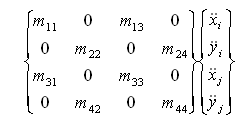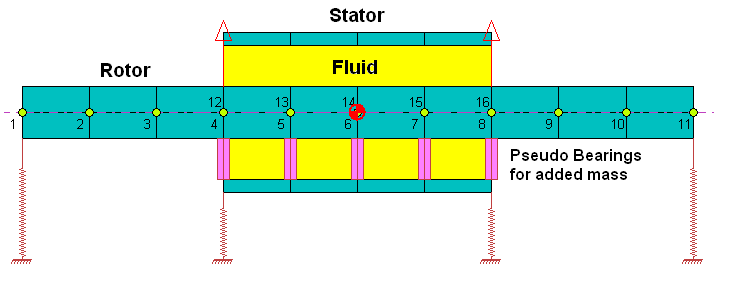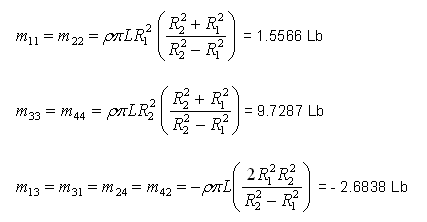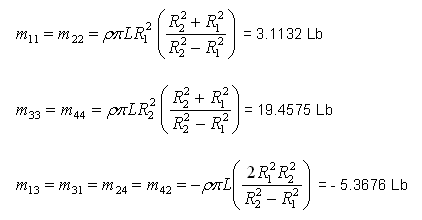
There are some applications in rotating machinery, such as pumps, the rotor is within another cylinder (pipe) and there is fluid filled in the annular space between two cylinders, as illustrated in the following figure.

When one structure vibrates, the adjacent structure also vibrates, as if there is a connection between these two structures. The coupling is based on the dynamic response of two points, or finite element stations at the centerlines of two cylinders, connected by the constrained fluid. The motion is assumed to be small and the fluid is incompressible. The two points are coupled by the added mass, often called fluid dynamic coupling. It is ideally treated as a pseudo bearing which connects two structure points with added mass matrix in the translational motion. Assuming the finite element station of the inner cylinder is station i with displacements of (xi, yi) and finite element station of the outer cylinder is station j with displacements of (xi, yi), the added dynamic force (mass matrix) has the form:

Assuming the inner cylinder has a radius of R1 and the outer cylinder has a radius of R2. The length of the cylinder is L, the density of the fluid is ρ. The values for m are:

Example

As illustrated in the above figure, water is constrained between the rotor and stator. The rotor OD is 4 in (R1=2 in), the stator ID is 10 in (R2 = 5 in), and the total length of the fluid occupied area is 20 in. Water density is 62 Lb/ft^3. The added mass due to the fluid is modeled with 5 pseudo bearings, which connect the rotor and stator. The added masses for bearings at both ends (using L=2.5 in), stations 4-12 and stations 8-16 are:

The added masses for the 3 bearings inside (using L=5 in), stations 5-13, stations 6-14, and stations 7-15 are:

Small amount of damping, Cxx and Cyy, is also added in these pseudo bearings.
References:
1. Fritz, R. J., 1972, The Effect of Liquids on the Dynamic Motions of Immersed Solids, Journal of Engineering for Industry, Vol. 94, pp.167-173.
2. Blevins, R. D., 2001, Flow-Induced Vibration, Krieger Publishing Co.
Copyright © 2014-2017